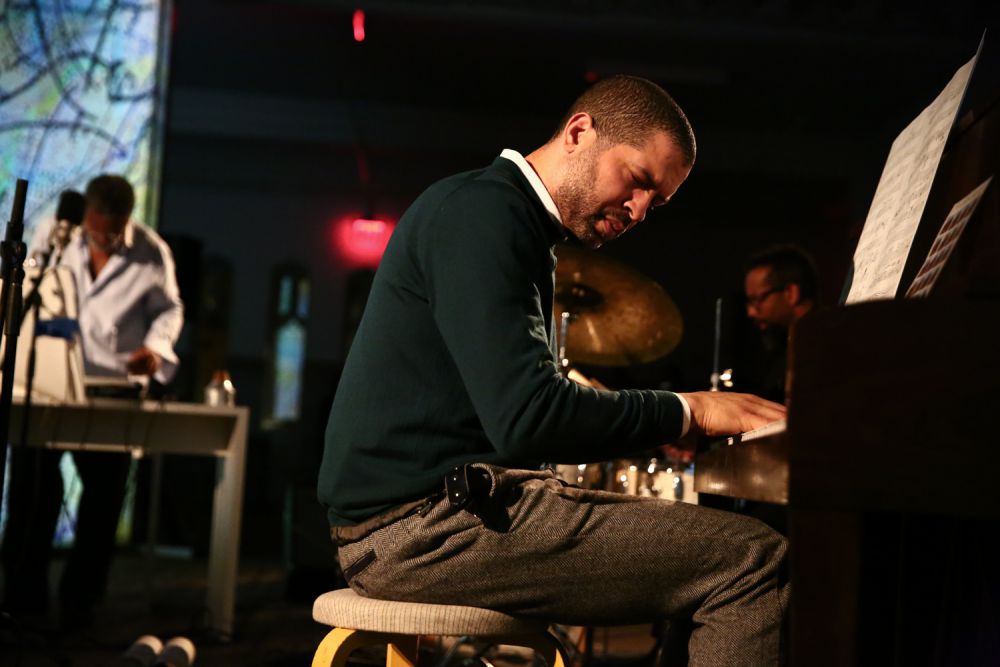Radical urbanism, new futures, and sound as connective tissue. Meet Performa biennial of performance art's RoseLee Goldberg.
RoseLee Goldberg, Founding Director and Curator of NYC's Performa festival. Photo: Patrick McMullan.
Art Matters: Innovators
RoseLee Goldberg
RoseLee Goldberg is a legend in the New York art scene. We met her and discussed radical urbanism, uncovering hidden futures, and how sound is a connective tissue across her culture-defining Performa biennial of performance art.
By Jennifer Lucy Allan
Exploring the city
Performa is deeply connected to New York City, and for roughly three weeks once every two years, New York becomes Performa. The performance art biennial happens across the city, in public spaces, iconic buildings and rediscovered gems, from Times Square to a skatepark in the Lower East side, painters in warehouses and musicians in former churches, Performa knows New York.
Its links to the city are something founding director and curator RoseLee Goldberg is deeply invested in. “It's really about a radical urbanism,” she explains over the phone in New York, a few days after the 2017 edition has wrapped. She tells a story of an Australian couple who came to this year’s festival and were astounded by how many places it took them to: Harlem, The Bronx, Central Park, Dumbo and Crown Heights in Brooklyn. “I’ve always felt Performa is very much about exploring the city,” she says, “and we as a festival also explore it, finding new spaces every year.”
New spaces discovered have included an old bank in Williamsburg, which Goldberg says looked like a Renaissance palace inside, and this year, Harlem parish, a vast former church used for a durational collaboration where painter Julie Mehretu collaborated with musician Jason Moran, the latter using Mehretu’s vast painting like a live score.
Sound as a connective tissue
Goldberg founded Performa in 2004, and she is its beating heart. A crucial figure in the New York art scene since the 70s, when she was a curator at The Kitchen venue, She has worked with a who’s who of the last 40 years of contemporary art and experimental music. She is also an accomplished art historian and educator. In the 80s she wrote the definitive text Performance Art: From Futurism to the Present, which is credited with naming and defining performance art, and is still in print 30 years later.
Performance art is able to incorporate a vast array of media and artistic styles, and historically, has always been in bed with avant-garde music, if not cheek by jowl in individual works then sharing the same stages and loft venues. This year sound figured strongly in a number of Performa pieces, from the opening gala, which was a tribute to Yoko Ono, with a performance by Laurie Anderson, through to the closing night, where South African jazz vocalist, Kemang Wa Leluhere was awarded the Malcolm McLaren award.
Goldberg is passionate when talking about the importance of sound in the biennial’s commissions. “Sound is in the connective tissue of a lot of these works,” she says, describing how, while Performa commissions pieces from across disciplines, sound is a consideration that often comes up early on in discussions with the artists they work with: “We ask: what is the sound going to be? How can we connect all these parts?”
““Sound is what creates the emotional ambience,” Goldberg explains. “It is part of what makes a connection with the audience.””
Performa 2017's visual identity, created in collaboration with artist Barbara Kruger.
Uncovering histories and futures
Goldberg says she is interested in where sound is going in the next decade, and one of the questions she’s interested in is how technology and design is considering sound. “So much of our work is about uncovering what these different histories and futures are,” Goldberg explains. Her attention to broader social context and history is a defining trait of Performa’s philosophy: Art does not happen in a vacuum. It is something Goldberg is hyper-conscious of too, through both her work as an educator, and from a childhood spent in South Africa.
She describes Performa in one sense as being a museum without walls, but it also has no edges. Just days after the closing event, she is, while works are still being taken down, thinking forward to 2019. Her energy is palpable, the excitement feeding into the way Performa operates, which she quite rightly describes as a very nimble institution. “People ask me during the biennial: aren't you exhausted?! and to me it's the most exhilarating time... To see these ideas realised brings such a great sense of excitement.”
She sees everything once, sometimes more than once. She says she likes to see the first and the last performance to see how things change, but quickly adds that she wants to see the middle one too. “It’s not like people have three weeks of rehearsal,” she explains. “They are really feeling it out as they go through the piece, so it grows in time and you're seeing a very fresh work.”
Capturing the present
Goldberg identifies the big question that drives Performa, from the artists commissioned to curation and direction as being about how to capture the present and bring important ideas to the fore; and to simultaneously create unforgettable work. “It’s very inspiring going forward,” she says. “We always say ‘this was such a great edition, how do we do this again?”







